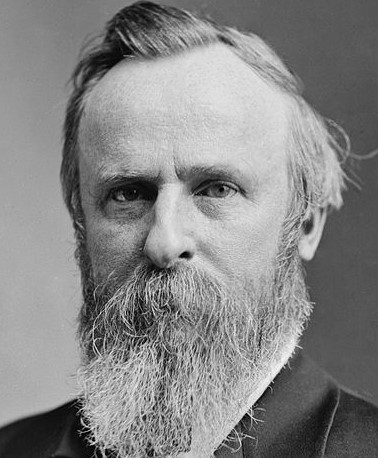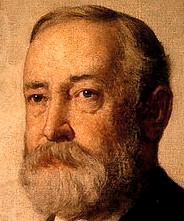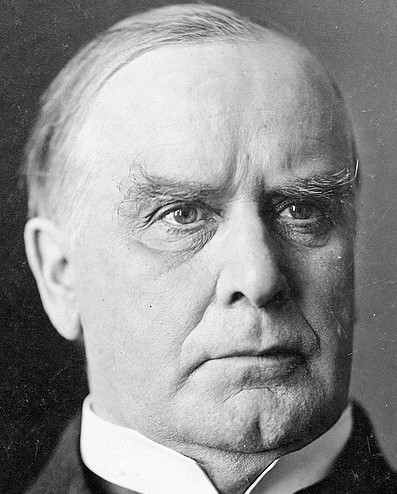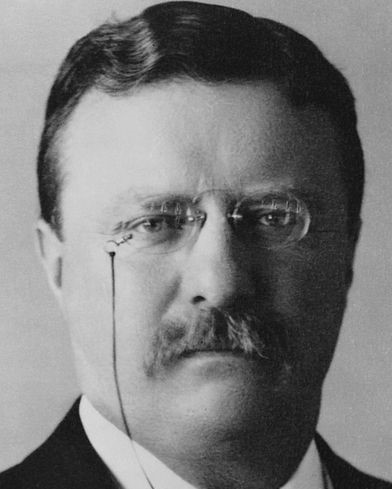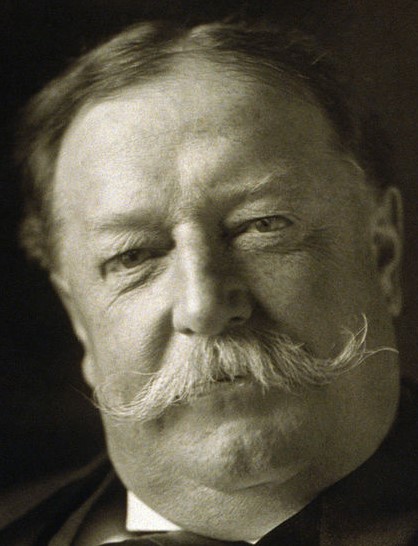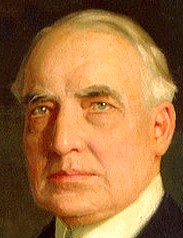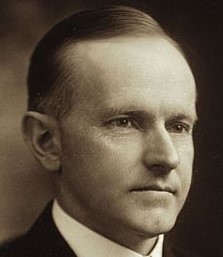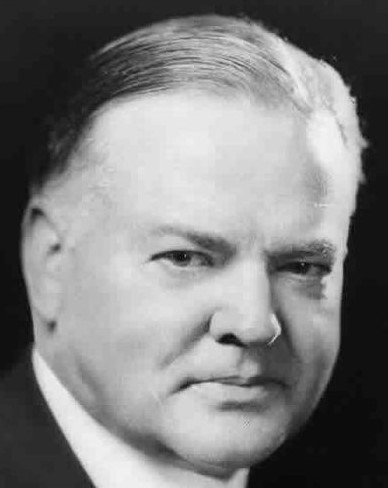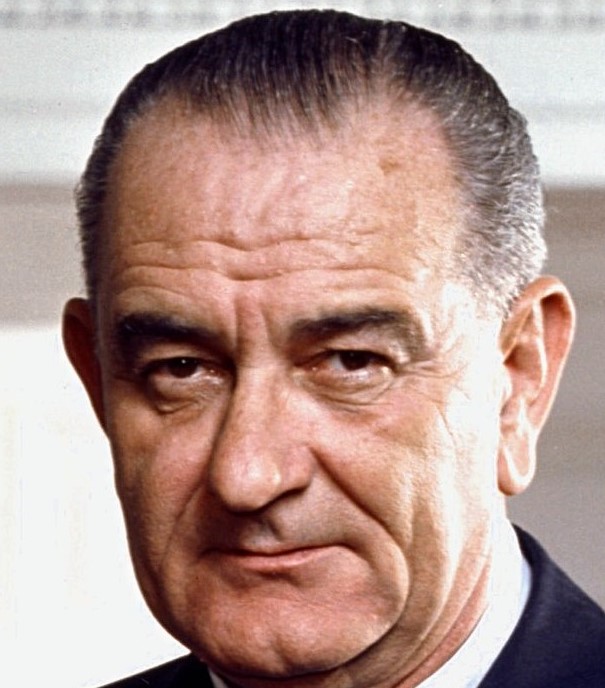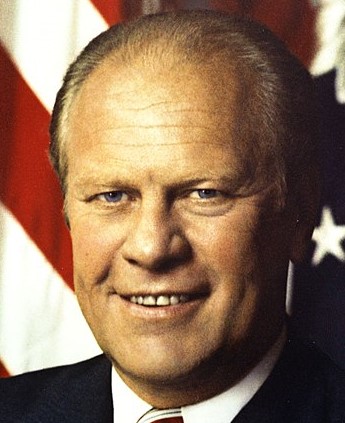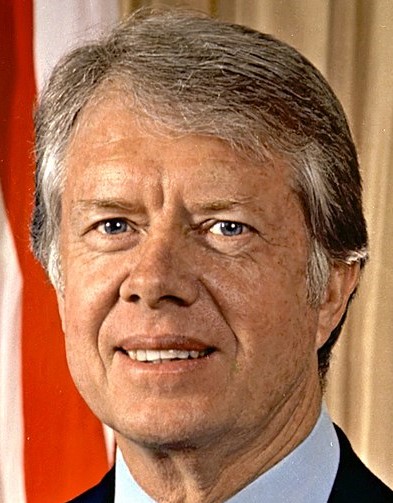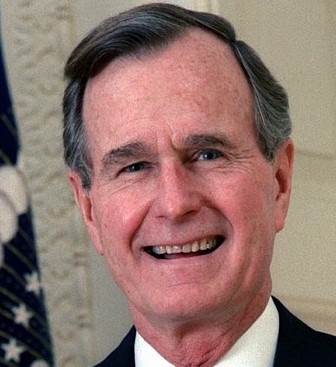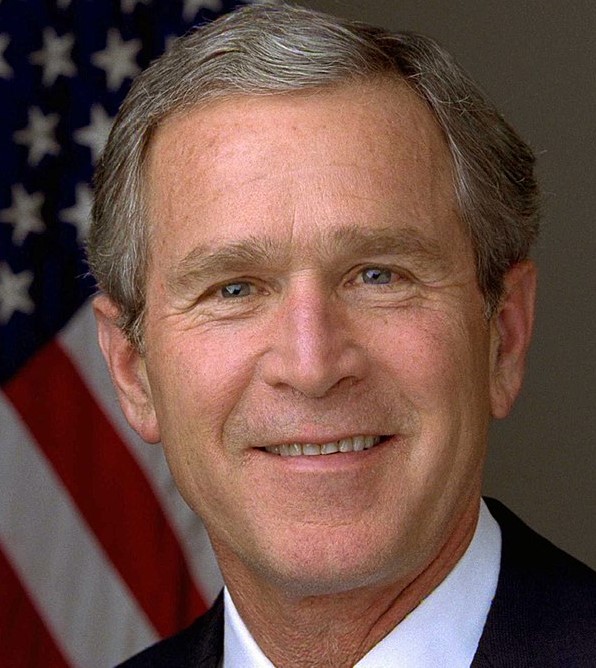Rutherford B. Hayes served for one term from 1877 to 1881 as the nineteenth U.S. president. He was born in Delaware, Ohio, on October 4, 1822, and graduated from Harvard Law School. At the outbreak of the Civil War, Hayes enlisted in the Union Army, was wounded five times, and rose to the rank of major general. He served in the House of Representatives and served as the governor of Ohio for three terms. The nation was still suffering from the pangs of the Civil War when he became president. One of his first actions was to withdraw Federal troops from the southern states. Hayes enjoyed being president, but disliked politics and chose not to run for a second presidential term. President Hayes was very proud of his ancestry, and especially of his Revolutionary War ancestors. He became an early member of the SAR. President Hayes died in Fremont, Ohio, on January 17, 1893.
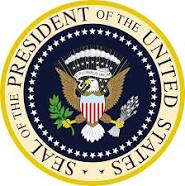
The SAR is proud of its compatriot presidents of the United States. We honor these SAR members who used their position as president to build a better America. Each remembered the founding of this great nation and the role of his Revolutionary War ancestor in making America the beacon of liberty and justice of all.
- Three U.S. presidents, George Washington, James Monroe, and Andrew Jackson, actually served during the Revolutionary War.
- Six U.S. presidents were real sons of Revolutionary War patriots. These men included John Quincy Adams, Martin Van Buren, William Henry Harrison, John Tyler, Zachary Taylor, and Franklin Pierce.
- Five U.S. presidents were the grandsons of Revolutionary War patriots, including James Knox Polk, Millard Fillmore, Abraham Lincoln, Chester A. Arthur, and Grover Cleveland.
- President James A. Garfield was the great-grandson of a Revolutionary War patriot, while President Richard M. Nixon was the great-great-grandson of a patriot.
To date, there have been sixteen presidents of the United States who were also SAR members. The Winter 2001 issue of the SAR Magazine featured these U.S. presidents with details of their backgrounds, including information about their Revolutionary War ancestors.
Compatriot US Presidents
-
Rutherford Birchard Hayes
1877-1881
-
Benjamin Harrison
1889-1893
Benjamin Harrison served for one term from 1889 to 1893 as the twenty-third U.S. president. He was born on August 20, 1833, at his grandfather’s farm near North Bend, Ohio. Harrison was the grandson of William Henry Harrison, the ninth president of the United States, and the great-grandson of Benjamin Harrison, a signer of the Declaration of Independence. Benjamin Harrison’s term as president fell between the two terms of Grover Cleveland.
The New Jersey SAR was organized on March 7, 1889, in Newark, New Jersey, and many patriotic men answered the recruiting bugle. The first public activity of the new state-level society was on April 29, 1889, at Elizabeth, New Jersey, when President Harrison visited Elizabeth on his journey to New York for the centennial ceremonies of George Washington’s inauguration as the first American president. At a reception by New Jersey Governor Green at his home, the individual members of the New Jersey SAR were presented to President Harrison. Later, the SAR members served as an honor escort for the president from the governor’s residence to the wharf, where he boarded a barge bound for New York.
President Harrison’s wife, Caroline Scott Harrison, was elected as the first president general of the Daughters of the American Revolution. Caroline Harrison and Rutherford B. Hayes’s wife, Lucy Webb Hayes, were cousins. President Harrison died in Indianapolis, Indiana, on March 13, 1901, at the age of sixty-seven. He is buried in Indianapolis, Indiana.
President Harrison has had numerous institutions named in his honor: the Benjamin Harrison Law School in Indianapolis; a 1942 United States Liberty ship named the SS Benjamin Harrison; and a U.S. Army post, Fort Benjamin Harrison, in Indianapolis.
-
William McKinley, Jr.
1897-1901
William McKinley was twice elected as president and served from 1897 to 1901 as the twenty-fifth president of the United States. He was born in Niles, Ohio, on January 29, 1843; attended Allegheny College in Pennsylvania; and volunteered for the Union Army during the Civil War. He distinguished himself in action, rising to the rank of major. William McKinley was the last veteran of the Civil War to be elected as president. He later graduated from the Albany Law School.
McKinley served in the House of Representatives, later was elected as the governor of Ohio, and became a national political figure. In 1896, he was nominated at the Republican National Convention and elected president by a large plurality.
President McKinley died in Buffalo, New York, on September 14, 1901, at the age of fifty-eight, succumbing to wounds received in an assassination attempt eight days after being shot. Vice President Theodore Roosevelt succeeded President McKinley. McKinley is buried in Canton, Ohio.
-
Theodore Roosevelt
1901-1909
Theodore Roosevelt became the twenty-sixth president of the United States upon the death of President William McKinley in 1901. At the age of forty-two, he was the youngest man to become an American president. Roosevelt was born in New York City on October 27, 1858. He graduated from Harvard University and attended law school. During the Spanish- American War, he led a daring charge up San Juan Hill and later received the Medal of Honor. In 1906, President Roosevelt was awarded the Nobel Peace Prize for negotiating the peace treaty between Russia and Japan.
Roosevelt joined the SAR on April 10, 1898, while he was the governor of New York. His Revolutionary War ancestor was Jacobus Roosevelt, who served as a captain in the New York Militia and who died in 1777. Jacobus Roosevelt’s son, Jacobus I. Roosevelt, served as a commissary for the entire war.
President Roosevelt died at Oyster Bay, New York, on January 6, 1919, at the age of sixty. He is buried in Youngs Memorial Cemetery in Oyster Bay, New York.
-
William Howard Taft
1909-1913
William Howard Taft served one term as the twenty-seventh U.S. president. He was born in Cincinnati, Ohio, on September 15, 1857. Taft graduated from Yale University and the University of Cincinnati Law School. He became the fifth U.S. Solicitor General in 1890. In 1901, he became the first civil governor of the Philippines. In 1904, President Roosevelt nominated Taft to be secretary of war and became the first provisional governor of Cuba in 1906. Three years later in 1909, William H. Taft was elected president.
After his term in office, Taft became a law professor at Yale. In 1921, President Harding appointed Taft as Chief Justice of the Supreme Court. He died one month after his retirement from the U.S. Supreme Court on March 8, 1930, in Washington, D.C., at the age of seventy-two. President Taft is buried in Arlington National Cemetery, Virginia.
-
Warren Gamaliel Harding
1921-1923
Warren Gamaliel Harding was born near Blooming Grove, Ohio, on November 2, 1865. He graduated from Ohio Central College and went into newspaper work. Harding soon entered politics and became a state senator in 1899. Four years later, he was elected as lieutenant governor of Ohio. In 1910, he ran for governor but lost. In 1914, Harding was elected to the United States Senate, becoming Ohio’s first senator elected by popular vote. He served in the Senate from 1915 until his inauguration as president on March 4, 1921, becoming the first sitting senator to be elected as president of the United States.
Warren G. Harding joined the Ohio SAR on July 2, 1920. He was a descendant of Abraham Harding, Jr., who resided in Walhill, New York, at the outbreak of the Revolutionary War. Abraham Harding, Jr., served as a lieutenant in the New York Militia. President Harding was invited to attend the thirty-fourth SAR National Congress held in Nashville, Tennessee.
President Harding was the sixth American president to die while in office. While traveling on a “voyage of understanding” through San Francisco, Harding died on August 2, 1923, at the age of fifty-seven. He is buried in Marion, Ohio.
-
John Calvin Coolidge, Jr.
1923-1929
Following the death of President Harding, Vice President Calvin Coolidge was sworn in by his father, a justice of the peace, in Plymouth Notch, Vermont. He was the sixth vice president to become the chief executive on the death of a president. Coolidge was born on July 4, 1872, in Plymouth, Vermont. He was later elected to a full term as U.S. president. Although named John Calvin Coolidge, Coolidge dropped his first name, preferring to use his middle name.
Coolidge graduated with honors from Amherst College in 1895. During his senior year, he wrote an essay on “The Principles Fought for in the American Revolution” and was awarded a gold medal by the SAR.
Coolidge joined the SAR in 1921 while serving as vice president. His Revolutionary ancestor was John Coolidge, who, at the age of nineteen, answered the call in April 1775 and joined the Massachusetts Militia as a private. He fought at the Battle of Bunker Hill and was discharged in 1778.
The thirty-ninth annual SAR Congress was held in Washington, D.C. Many of the delegates and their spouses marched from the Mayflower Hotel to the White House to be received by Compatriot and President Coolidge. The president briefly spoke to the group and greeted many of the attendees personally.
After his presidency, Coolidge served as chairman of the Railroad Commission, an honorary president of the Foundation of the Blind, a director of New York Life Insurance Company, and a trustee of Amherst College. President Coolidge died suddenly of a heart attack at his home in Northampton, Massachusetts, on January 5, 1933, at the age of sixty. He is buried in Notch Cemetery in Plymouth Notch, Vermont.
-
Herbert Clark Hoover
1929-1933
Herbert C. Hoover served one term as the thirty-first U.S. president from 1929 to 1933. Hoover was born in West Branch, Iowa, on August 10, 1874. He was orphaned at an early age and lived with an uncle in Oregon. In 1891, Hoover graduated from Stanford University. He pursued mining engineering in many parts of the world, including work in Australia, Africa, and China. While in China, he directed food relief operations for victims of the Boxer Rebellion.
When World War I began, Hoover was a wealthy mining engineer. He was appointed as chairman of the American Relief Commission, served as the chairman of the Commission for Belgium Relief, and finally became the U.S. Food Administrator. Hoover was recognized as a great humanitarian and an excellent administrator.
Herbert Clark Hoover’s Revolutionary War ancestor was Jacobus Wynne, a private in the first Regiment, Ulster County Militia, New York Troops. Another SAR ancestor was Isaac Sherman, a lieutenant in the Second Regiment of the New York Line. On November 1, 1928, President Hoover accepted an invitation to join the Pennsylvania SAR. He visited the national SAR Headquarters on 16th Street for his SAR membership ceremony.
Hoover served separately as part of both Presidents Harding and Coolidge’s administrative cabinets. When President Coolidge chose not to run for reelection, Herbert Hoover ran for and was elected as president. Hoover worked conscientiously at being a good president and has been harshly judged because of the enusing Great Depression. In 1929, the American stock market crashed and the economy collapsed. There was widespread unemployment. Hoover was defeated by Franklin D. Roosevelt for the next presidential term.
At the conclusion of World War II, President Truman appointed Hoover as the coordinator of the European Food Program. Later, he was appointed chairman of the Commission to Reorganize the Executive Branch. Hoover died in the city of New York on October 20, 1964, at the age of ninety. President Hoover is buried at the Herbert Hoover Presidential Library and Museum in West Branch, Iowa.
-
Franklin Delano Roosevelt
1935-1945
Franklin Delano Roosevelt was elected to four terms as the American chief executive, serving from 1935 until 1945 and longer than any other president. He was born at Hyde Park, New York, on January 30, 1882. Roosevelt was president during the Great Depression and most of World War II.
Franklin Roosevelt’s SAR Revolutionary War ancestor was Isaac Roosevelt, who served as a private in the 6th Regiment, Dutchess County Militia, New York Troops.
On June 14, 1931, Roosevelt, then governor of New York, attended the SAR Flag Day Descendants Day ceremonies on the village green adjoining St. Paul’s Episcopal Church in the quaint village of Eastchester, New York. Many SAR members, along with the Color Guard of the New York Chapter of the Empire State SAR, attended. Theodore Roosevelt and Franklin D. Roosevelt’s ancestor was an original pew holder and vestryman of this church. The church’s bell, prayer book, Bible, and chalice had been secretly buried during the Revolutionary War. The bell hangs in the belfry today, and the books and chalice are displayed on special occasions.
On April 20, 1933, SAR President General Frederick W. Millspaugh and General Fries called at the White House to inform President Roosevelt that his SAR membership had been approved. Two of President Roosevelt’s sons joined the SAR as well: Colonel James Roosevelt and Congressman Franklin D. Roosevelt, Jr.
One month prior to the surrender of Germany, and less than three months after being elected to his fourth presidential term, President Roosevelt died of a cerebral hemorrhage at Warm Springs, Georgia, on April 12, 1945, at the age of sixty-three. Roosevelt is buried at the family home at Hyde Park, New York.
-
Harry S TRuman
1945-1954
Harry S. Truman became the thirty-third president of the United States from 1945 to 1954, having previously served as vice president and succeeding Franklin D. Roosevelt. Truman was born in Lamar, Missouri, on May 8, 1884. He was working on the family farm at the outbreak of World War I when his National Guard unit was called to active duty. He saw action in France and was discharged from service as a captain.
After the First World War, Truman operated a clothing store in Kansas City, Missouri, which failed. He then entered politics and was elected as a county judge. In 1934, he became a U.S. Senator from Missouri. He served effectively in the Senate until he was selected as the vice presidential candidate for President Roosevelt’s fourth term.
Upon completing his second presidential term in 1953, President Truman returned to Independence, Missouri, and wrote his memoirs.
Truman’s SAR Revolutionary War ancestor was Lieutenant James Holmes of the 2nd Regiment of the Virginia Militia, who served from 1777 to 1781. At Truman’s home in Independence, SAR President General Lee Young Smith presented the former U.S. president with his SAR membership certificate, SAR Membership insignia badge, and the SAR Gold Good Citizenship Medal.
President Truman died in Kansas City, Missouri, on December 26, 1972, at the age of eighty-eight. He is buried at the Truman Library in Independence, Missouri.
-
Dwight David Eisenhower
1953-1961
Dwight David Eisenhower served two terms as the thirty-fourth U.S. president from 1953 to 1961. He was born in Dennison, Texas, on October 14, 1890. He graduated in the upper half of his class from the U.S. Military Academy at West Point in 1915.
Eisenhower served a career in the U.S. Army culminating as supreme commander of all Allied Forces and led the Normandy invasion in 1944. He was the president of Columbia University in 1948. He returned to active duty in 1950 as commander of NATO troops.
Eisenhower’s SAR Revolutionary War ancestor was John Peter Eisenhower, who furnished supplies to the Continental Army troops during the winter of 1777 and 1778 at Valley Forge. Another SAR ancestor was John Matter, a Pennsylvania Militia soldier who fought at the Battle of Long Island. Thanks to the work of the Empire State SAR, the Eisenhower’s SAR application for membership was approved in 1945. President Eisenhower’s son, John Doud Eisenhower, and his brother, Dr. Milton Stover Eisenhower, joined the SAR as well.
Eisenhower was the Republican Party candidate and was elected U.S. president in 1951, began his first term in 1952, and was reelected to serve a second term. When his term of office was completed, Eisenhower retired to his farm in Gettysburg, Pennsylvania.
General Eisenhower retired as a five-star general. We are reminded at times of this fact by the commemorative signs denoting interstate highways as part of the Eisenhower Interstate System, which display five silver stars on a light blue background.
President Eisenhower died in Washington, D.C., on March 28, 1969, at the age of seventy-eight. He is buried at the Eisenhower Library in Abilene, Kansas.
-
Lyndon Baines Johnson
1963-1969
Lyndon Baines Johnson served as the thirty-seventh vice president of the United States and became the thirty-sixth president of the United States, from 1963 to 1969, following the assassination of President John F. Kennedy. He was born in Stonewall, Texas, on August 27, 1908. He graduated from Southwest Texas State Teachers College in 1930. With the assistance of his wife, Ladybird Johnson, he developed an extensive enterprise in farming and broadcasting. In 1937, he entered politics and was elected to the first of four terms in the U.S. House of Representatives.
Johnson was the first congressman to enter active duty when the U.S. entered World War II. He was discharged as a lieutenant commander after four years in the Navy.
In 1948, Johnson was elected to the first of two terms as a U.S. senator. In 1955, he became the youngest Congressional majority leader in history. When President Kennedy ran for office, he asked Johnson to be his vice president. After completing the remainder of Kennedy’s second term, Johnson was elected as president in his own right in a landslide victory in the 1964 presidential election.
Lyndon B. Johnson’s SAR Revolutionary War ancestor was John Johnson, who served as a soldier in the Georgia State Militia.
President Johnson died of a heart attack on his ranch in Stonewall, Texas, on January 22, 1973, at the age of sixty-four. Johnson is buried in the family cemetery now part of the Lyndon B. Johnson National Park in Stonewall, Texas.
-
Gerald Rudolph Ford
1974-1977
Gerald Ford was born in Omaha, Nebraska, on July 14, 1913. He was a football star at the University of Michigan, where he received his Bachelors degree. He graduated from Yale Law School in 1938. He served as a naval officer for four years in World War II and was discharged as a lieutenant commander.
Gerald R. Ford was elected to the U.S. House of Representatives in 1950 and served as a congressman for twenty-five years. He was leader of the House Republicans for eight years. On October 12, 1973, Ford was nominated as the fortieth vice president by President Richard M. Nixon after Vice President Spiro Agnew’s resignation. He was the first person appointed to the office of vice president under the terms of the Twenty-fifth Amendment. Less than a year later, on August 9 1974, Ford became president upon Nixon’s resignation. Ford was the fifth U.S. president never to have been elected to that position, and the only one never to have won any national election.
President Ford’s SAR Revolutionary War ancestor was Ezra Chase, who served as a Minuteman in the Massachusetts Militia.
In 1975, SAR President General Graham Clark visited the Oval Office of the White House to present President Ford with his membership certificate and his SAR membership badge. In 1989, the SAR centennial year, President Gerald R. Ford was presented with the SAR Gold Good Citizenship Medal.
President Ford died in Rancho Mirage, California, on December 28, 2006. He was also the longest-lived president in U.S. history, living until the age of ninety-three. Ford is buried at the Gerald Ford Museum and Presidential Library in Grand Rapids, Michigan.
-
James Earl Carter Jr
1977-1981
James Earl “Jimmy” Carter Jr. served one term as the thirty-ninth president of the United States from 1977 to 1981. He was born in Plains, Georgia, on October 1, 1924. Carter attended Georgia Tech and Georgia Southwestern State University before receiving an appointment to the United States Naval Academy where he received a Bachelor of Science degree in physics in 1946 and is the only graduate of the Naval Academy to become a U.S president. Carter finished a high fifty-ninth out of his Academy class of eight hundred twenty. He served on surface warfare ships and qualified for diesel-electric submarines. He is the only U.S. president to qualify in submarines.
Upon the death of his father in 1953, Carter resigned his commission and returned home to take over and expand his family business in Plains. He served two terms in the Georgia Senate and as the seventy-sixth governor of Georgia, from 1971 to 1975. As governor, he campaigned and won the election to become the thirty-ninth president of the United States.
President Carter received the Nobel Peace Prize in 2002 for his work “to find peaceful solutions to international conflicts, to advance democracy and human rights, and to promote economic and social development” through the Carter Center. He was the third U.S. president, alongside Theodore Roosevelt and Woodrow Wilson, to be awarded the Nobel Prize.
President Carter’s SAR Revolutionary War ancestor was Perry Scott, who served as a private in Captain Allen McLane’s Company of the Delaware Militia. President Carter is a member of the Georgia SAR. He was presented his SAR membership certificate in 1990. In 1996, Carter was presented the SAR Gold Good Citizenship Medal.
The Jimmy Carter Library and Museum is located in Atlanta, Georgia. It houses President Carter’s papers and other material relating to his administration and his life. The library also hosts special exhibits such as one covering the United States Bill of Rights and Carter’s Nobel Peace Prize.
-
George Herbert Walker Bush
1989-1993
George H. W. Bush was the forty-first United States president from 1989 to 1993. He was born in Milton, Massachusetts, on June 12, 1924. His family moved to Greenwich, Connecticut, shortly after his birth. Bush was eighteen years old when the Japanese attacked Pearl Harbor. He joined the Navy and became a naval aviator and was commissioned as an ensign. He served until the end of the war and then attended Yale University. Upon graduation in 1948, Bush moved to Texas and entered the oil business. He also soon became involved in American politics.
Bush held a number of political positions prior to his presidency, including being a member of the U.S. House of Representatives, U.S. ambassador to the United Nations, chief of the U.S. Liaison Office to the People’s Republic of China, director of the CIA, and vice president of the United States during the Reagan administration.
President Bush’s SAR Revolutionary War ancestor was Colonel Samuel Herrick, who served with distinction as a commander of the Vermont Ranger Militia. Bush is a member of the Texas SAR and a Texas perpetual member of the Patrick Henry Chapter in Austin, Texas. He was presented his SAR membership certificate in his Houston, Texas, office on May 1, 2001. Texas SAR President Nathan White, Jr. inducted U.S. President George H. W. Bush into the SAR, while SAR President General Bruce Butler pinned the SAR rosette on Bush. SAR Secretary General B. Rice Aston and several other members of the Paul Carrington Chapter were also present at this occasion.
The George Bush Presidential Library and Museum is located on a ninety-acre site on the west campus of Texas A&M University in College Station, Texas. The library contains the papers and memorabilia from Bush’s days in public service as well as those of U.S. Vice President James Danforth Quayle.
-
George Walker Bush
2001-2009
George Walker Bush, son of President George H. W. Bush, served two consecutive terms as the forty-third president of the United States from 2001 to 2009. He was born in New Haven, Connecticut, on July 6, 1946. He is a graduate of Yale University and the Harvard Business School. Before becoming president, Bush served as the governor of Texas. President Bush’s SAR Revolutionary War ancestor was Colonel Samuel Herrick, who served with distinction as commander of the Vermont Ranger Militia. In July 1988, George W. Bush received his SAR membership certificate and lapel rosette while he was the Texas state governor. Like his father, Bush is a Texas perpetual member of the Patrick Henry Chapter in Austin, Texas. After completing his second presidential term in 2009, Bush returned to Texas and purchased a home in a suburban area of Dallas. He is currently a public speaker, has written a memoir, and has taken up painting as a hobby. The George W. Bush Presidential Center, a presidential library and museum located near Dallas, was opened in 2013.

